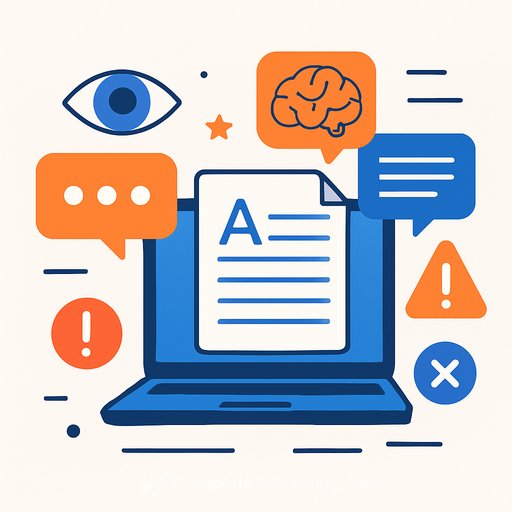The em dash didn't write your draft - you did
Writers across forums, campuses, and group chats keep calling the em dash a tell for AI. It isn't. Used well, it signals control, not shortcuts.
Melissa Root, Ph.D., an English professor and writing consultant, puts it plainly: "That's a wrong assumption." She calls the em dash "a sophisticated piece of punctuation" - which is exactly why many misuse it and others misjudge it.
What the em dash actually does
"Generally, they are used to set off information in a sentence," Root said. "There are other pieces of punctuation that can do that, but dashes are the strongest." If commas whisper, the em dash speaks with intent.
It can frame a sharp aside, clarify complex appositives, or replace a colon for emphasis. Example: "The deadline - not the idea - is your problem."
One specific use case matters for formal work: if you open with an epigram or quote at the start of a paper or essay, "You put the em dash before the author's name," Root said.
The myth: em dashes = AI
Some in tech and marketing have tried to purge the mark from AI copy. As one exec posted, "I managed to strip out almost every recognizable AI signature, except for one. That stupid, stubborn, persistent em dash." That attitude misses the point - the issue is usage, not the symbol.
Writers have leaned on this mark for centuries. As a satire in McSweeney's put it: "The real issue isn't me - it's you… I'm in Austen. I'm in Baldwin." The history is long; the pattern is human.
Root's stance is simple: watch for real signals of weak writing, but don't mistake a punctuation choice for authorship. Substance, evidence, and voice still decide credibility.
Practical rules for writers
- Use an em dash to insert a concise, high-value aside - not a paragraph.
- Prefer it over commas when the aside needs punch or clarity; prefer commas when flow matters more than force.
- Avoid stacking dashes. One or two per sentence is usually enough.
- Don't replace every colon or parenthesis. Choose based on tone and readability.
- For epigraphs at the top of a piece, place an em dash before the author's name.
- Spacing is style-dependent. Chicago favors closed (-like this); AP uses spaces - like this. Match your style guide.
- Read aloud. If the sentence hiccups, revise before blaming the dash.
For a quick refresher on dashes, see Purdue OWL.
Make it effortless: quick shortcuts
- Mac: Option + Shift + Hyphen (-)
- Windows: Alt + 0151 (numeric keypad), or let Word convert two hyphens to an em dash
AI and your draft quality
Root's read on AI output is blunt: "It usually doesn't score very well. I grade on merit. And AI prose generally isn't going to get higher than a C." Tools can't hide weak thinking - and punctuation won't expose strong writing.
One student put it this way: "I don't like it for writing. I'd rather use my own mind." Smart take. If you do explore tools, use them to brainstorm or outline, then rewrite until it sounds like you.
If you experiment with copy tools, curate them to serve your process, not replace it: AI tools for copywriting.
Bottom line
The em dash is a scalpel. It clarifies when you're precise and clutters when you're not. Don't let detection myths dictate your style. Let clarity, evidence, and your voice make the case - dash or no dash.
Your membership also unlocks:






